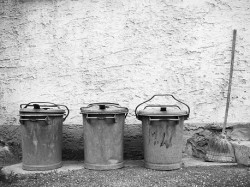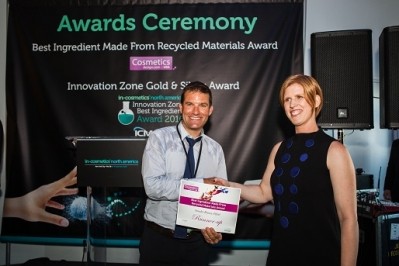P&G targets zero waste from manufacturing

“Since 2010, we’ve been working toward a vision of sending zero manufacturing and consumer waste to landfills,” Shailesh Jejurikar, executive sponsor for sustainability and president of global fabric care for the company, tells the press. “This announcement marks another step on that journey,” he says.
The announcement specifies that P&G will send no production manufacturing waste directly to landfills after 2019.
Explicating the initiative further, Jejurikar says, “We are accelerating progress toward our long term vision and pushing ourselves to do more – with less waste.”
Well begun
In a press release about the new waste-eliminating objective, P&G reports that already 56% of the company’s manufacturing sites have met the zero-waste objective. Putting the remaining task into perspective, the company writes, “This means eliminating or beneficially re-using about 650,000 metric tons of waste…that would typically go to landfills.”
For the multinational CPG company, it's a global project. Individual product manufacturing facilities in Germany, UK, Poland, Japan, Mexico, Spain, Egypt, Belgium, Ireland, Vietnam, Hungary, Indonesia, Czech, Romania, Singapore, Korea, Thailand, Turkey, and Pakistan operate with zero waste. In two countries, India and China, P&G is quite close to having all facilities operating with zero-waste.
How to
P&G is using three avenues to avoid depositing its production waste material into landfills. The company will either find a way to turn waste into a finished product, recycle it (in-house or externally), or facilitate the re-use of the material by forging partnerships with entities that can put the waste to good use.
Finding such opportunities requires creativity. But with the right sort of thinking an ingenious waste-repurposing partnership can be a new revenue stream. “Our employees are using the same innovation skills and zero loss mentality they put into manufacturing our products to drive out waste,” notes Yannis Skoufalos, P&G president of global product supply.
He points to a couple of illustrative partnerships: “For example surfactants from Head and Shoulders waste in China are repurposed into carwash, while scrap from our Tampax plant in Canada is used to make emergency spill containment products. These innovative external partnerships enable our sites to see scrap not as waste, but as potential worth for someone else.”


![Latest developments from the South Korean beauty market. [Getty Images]](/var/wrbm_gb_food_pharma/storage/images/_aliases/wrbm_tiny/publications/cosmetics/cosmeticsdesign-asia.com/headlines/brand-innovation/korea-focus-able-c-c-kolmar-and-more-in-this-k-beauty-round-up/17357973-1-eng-GB/Korea-focus-Able-C-C-Kolmar-and-more-in-this-K-beauty-round-up.jpg)

![Able C&C has furthered its partnership with Japanese discount chain Daiso with new makeup launch. [A'pieu]](/var/wrbm_gb_food_pharma/storage/images/_aliases/wrbm_tiny/publications/cosmetics/cosmeticsdesign-asia.com/headlines/brand-innovation/a-pieu-and-daiso-launch-exclusive-2-makeup-line/17339117-1-eng-GB/A-pieu-and-Daiso-launch-exclusive-2-makeup-line.jpg)
![Down Under Enterprises is setting sights on the Asian market as environmental sustainability and traceability become increasingly important. [Getty Images]](/var/wrbm_gb_food_pharma/storage/images/_aliases/wrbm_tiny/publications/cosmetics/cosmeticsdesign-asia.com/headlines/market-trends/down-under-enterprises-shifts-focus-to-china-as-environmental-sustainability-traceability-come-into-the-spotlight/17304932-1-eng-GB/Down-Under-Enterprises-shifts-focus-to-China-as-environmental-sustainability-traceability-come-into-the-spotlight.jpg)
![News updates from Shiseido, Dr.Ci:Labo, Sephora, and more. [Shiseido]](/var/wrbm_gb_food_pharma/storage/images/_aliases/wrbm_tiny/publications/cosmetics/cosmeticsdesign-asia.com/headlines/brand-innovation/updates-from-shiseido-dr.ci-labo-sephora-and-more/17334944-1-eng-GB/Updates-from-Shiseido-Dr.Ci-Labo-Sephora-and-more.jpg)

![Clariant has underscored the importance of localisation strategies and distribution capabilities in China with beauty trends evolving at a rapid pace. [Getty Images]](/var/wrbm_gb_food_pharma/storage/images/_aliases/wrbm_tiny/publications/cosmetics/cosmeticsdesign-asia.com/article/2024/04/16/clariant-emphasises-importance-of-localisation-in-the-era-of-viral-trends/17327969-1-eng-GB/Clariant-emphasises-importance-of-localisation-in-the-era-of-viral-trends.jpg)



